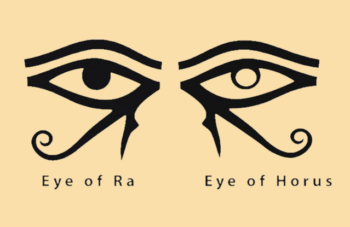Definition:
The “Eye of the Devil” typically refers to a malevolent, watchful gaze that symbolizes evil, misfortune, or a sinister presence. It can be interpreted literally, as an actual eye belonging to a demonic figure, or metaphorically, representing the perception of evil influences or the feeling of being watched by something wicked.
Etymology:
The phrase “Eye of the Devil” combines “eye,” derived from the Old English word “ēage,” which refers to the organ of sight, with “devil,” originating from the Old English “deofol,” which comes from the Latin “diabolus,” meaning “slanderer” or “accuser,” a term often associated with Satan in Christian theology. The word “devil” has roots in ancient Greek “diábolos,” which also means “slanderer.”
Symbolism:
In literature and popular culture, the symbol of an eye is often used to represent God’s antagonist: Satan/the Devil (also known as Dajjal). The symbol is also known as the evil eye. One eye symbolizes a fantasy and a lie, which is accurate in the context of the Eye of the Devil, as the Devil is a fictional character.
The music album cover for “Casus Luciferi” by Watain features a group of hooded figures, possibly fallen angels, gathered beneath a glowing, upside-down Eye of Providence, symbolizing the Eye of the Devil. The arc shape of the background, together with the eye in the sky, forms the symbol of Islam, also known as the Mason symbol. “Casus Luciferi” is Latin and means “the fall of Lucifer.”
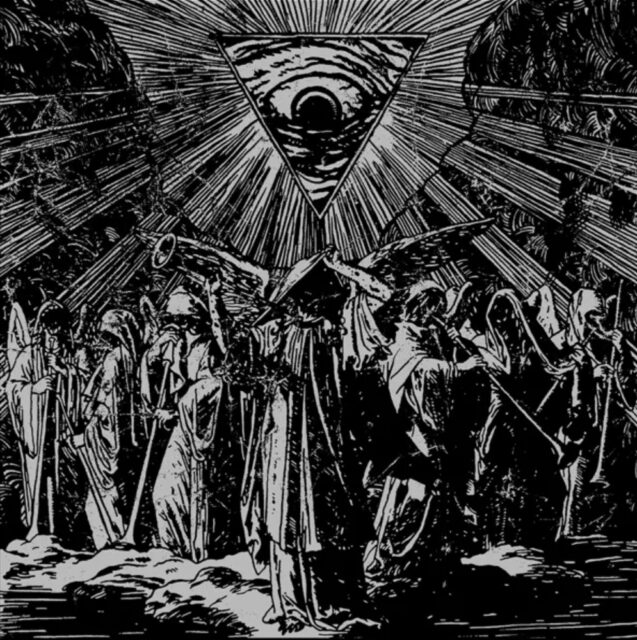
The fresco “Sermon and Deeds of the Antichrist” by Luca Signorelli in the cathedral of Orvieto, Italy, depicts the Devil whispering in the ear of Jesus Christ during the Sermon on the Mount, hinting at it being the Devil speaking through Jesus, meaning the Sermon on the Mount was lies. In the painting, we see the Devil’s face in profile with only one eye visible.
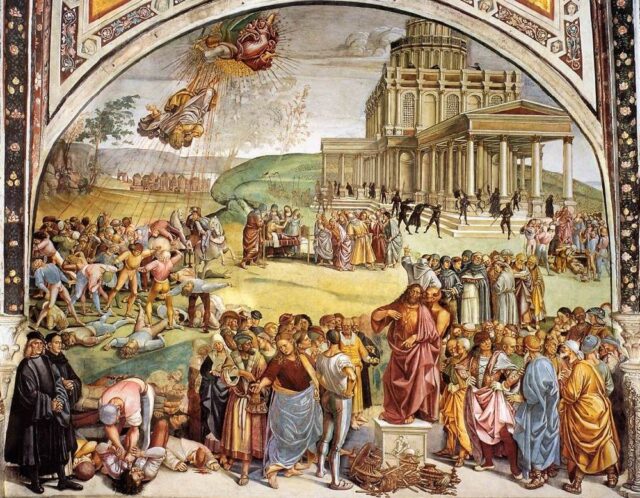
The music album cover for Celtic Frost’s “To Mega Therion” depicts a dark, surreal scene in which a large, horned figure resembling the Devil holds Jesus Christ, with His arms stretched out, forming the shape of the letter “Y,” as He was when crucified. The Devil is using Jesus as a slingshot. One of the Devil’s eyes is closed, giving the impression that he is aiming with precision, and a large nail appears ready to be launched from Jesus’ outstretched arms. The background features serpentine creatures and haunting, skeletal faces, enhancing the ominous and disturbing tone of the image.

In the opening credits of the TV series “Cow and Chicken,” the character Red Guy (The Devil) is shown in four different costumes (parodying the Devil’s reputation as a master of disguise) while winking, smiling, and giving a thumbs-up.
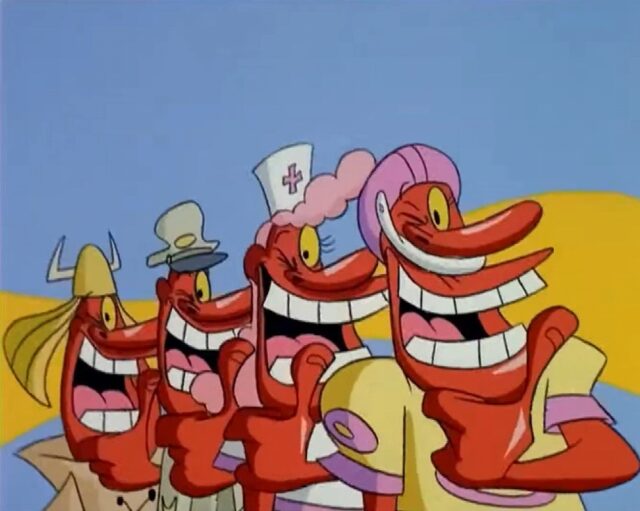
The video game cover for “Dungeon Siege II” features the antagonist Valdis, who has red skin and one visible eye.
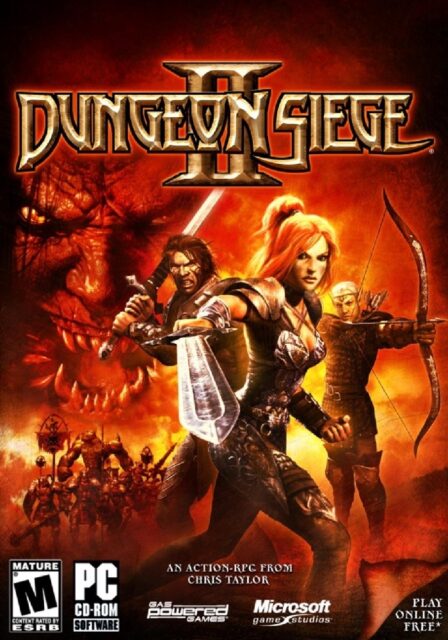
The music album cover for Eminem’s “Curtain Call 2” features an image of Eminem prominently in the center, making a hand gesture symbolizing devil horns, which blocks his right eye. He is placed inside a rhombus. The theatrical curtains being pulled open form the triangular shape of an upside-down love heart, with the number 2 placed at the top. Together, they resemble the Illuminati symbol. The artwork is filled with references to his career, including a character wearing an old hockey mask, peeking with one eye visible through the opening of a curtain.

The way Netflix chooses to promote the TV series “Lucifer” highlights the symbolism of Lucifer’s duality. Lucifer is left-eyed, while Chloe Decker is right-eyed. First, Lucifer teaches Chloe Decker to see with the left eye, then Chloe Decker teaches Lucifer to see with the right eye.
In the Quran, Al-Masih ad-Dajjal is described as a false messiah or an antichrist figure; in other words, a devil. Hadiths describe Al-Masih ad-Dajjal as an evil creature who will appear at the end of times before Judgment Day. He is often depicted as a man with one eye. The name Dajjal is Arabic and means “deceiver” or “the great liar.” The name Al-Masih ad-Dajjal is Arabic and means “the false messiah” or “the deceiving messiah.”
Book covers for “Dajjal: The Final Deception” by Aftab Shahryar features a large eye. In the original book cover, the eye is observing the earth burning. In the alternative book cover, fire is coming out of an angry eye.
The cover of the book “Who Is Dajjal?” by Marium Waqer features a stylized depiction of the Dajjal, often described in Islamic eschatology as the false messiah, with one eye closed. Dajjal has the number 666 on his hood and is wearing a necklace with an Eye of Providence pendant. Between his eyes (as a third eye) is a symbol that reads “كفر” (kafir), an Arabic word that translates to “disbelief” or “unbeliever.” In Islamic eschatology, it is said that the Dajjal, or false messiah, will have the word “kafir” written on his forehead.

In the prophecy book “The Arts of Islam: Treasures from the Nasser D. Khalili Collection,” there is an image of Isa (Jesus) fighting Dajjal. Isa is stabbing Dajjal in the right eye with a spear.

In the opening credits of the TV series “The Powerpuff Girls,” the devilish character “Him” is shown with only one eye visible while being kicked in the face by Buttercup.
The movie poster for The Devil’s Own (1997), features both the characters Tom O’Meara and Rory Devaney with only one eye visible each. “The Devil’s Own” title refers to the moral ambiguity and duality of the characters, particularly Rory Devaney. Rory is involved in violent acts for what he sees as a noble cause—the IRA’s struggle—yet his methods can be seen as morally corrupt, aligning with a “devil’s” path. The title suggests that even those fighting for causes they believe in might walk a dark road, becoming “the devil’s own” in their pursuit, highlighting the conflict between good and evil in the story. Therefore Rory is depicted with only his left eye visible. Tom on the other hand, is unaware of Rory’s real intentions. Therefore he’s depicted with his only his right eye visible.
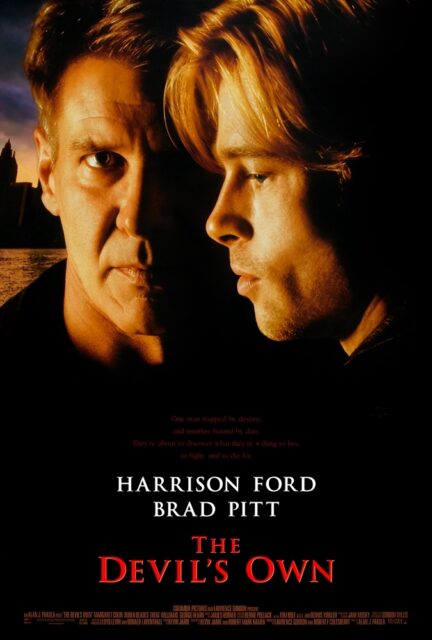
Articles:
Eye
Definition: The “eye” is a complex sensory organ responsible for vision. It detects light and converts it into electrochemical signals, which are then processed by the brain to produce images….
Eye and Smile
Definition: The “Eye and Smile” is a symbol that consists of a single eye and a smile. Etymology: The English word “eye” comes from the Old English “ēage”, which is…
Eye of Deception
Definition: The “Eye of Deception” is a symbolic representation that what is being observed or conveyed is false or misleading. It serves as a warning or indication that what is…
Eye of Fantasy
Definition: “Eye of Fantasy” refers to the symbol of a single eye used to represent a situation that is impossible, unrealistic, or inaccurate. It is often used to indicate that…
Eye of Jesus
Definition: The term “Eye of Jesus,” also known as the “Eye on the Cross,” typically refers to a metaphorical or symbolic concept within Christian theology and spirituality. It is not…
Eye of Truth
Definition: The “Eye of Truth” is a symbolic concept carrying dual meanings. The Eye of Truth is used by spiritual people as a metaphor for seeing that which does not…
Eyes of Horus
Definition: The “Eyes of Horus” is an ancient symbol originating from ancient Egyptian mythology where a set of two eyes were referred to as the Eyes of Horus, Udjat, or…
Illuminati
Definition: “Illuminati” refers to individuals who understand how language, religion, and the world system are scams. Etymology: The term “Illuminati” originates from Latin and means “the enlightened.” It is derived…
The All-Seeing Eye
Definition: The “All-Seeing Eye,” also known as the “Eye of Providence” or the “Eye of God,” is a symbol often depicted as an eye enclosed in a triangle and surrounded…
Tower of Babel
Pieter Bruegel the Elder: The Tower of Babel (1563). Lucas van Valckenborch: Tower of Babel (1594). Gustave Doré: The Confusion of Tongues. Definition: “Babel’s Tower” is a fictional tower from…
Religion:
While the Bible does not explicitly mention the “Eye of the Devil,” the concept of Satan as an ever-watchful adversary is present. Satan is described as a tempter and deceiver who seeks to corrupt humanity (e.g., 1 Peter 5:8, where the devil is depicted as a “roaring lion, seeking whom he may devour”).
In Pagan and Occult Traditions, the “Eye of the Devil” may also relate to the concept of the “evil eye,” a belief that certain individuals can cast curses or cause harm through a malevolent gaze.






















